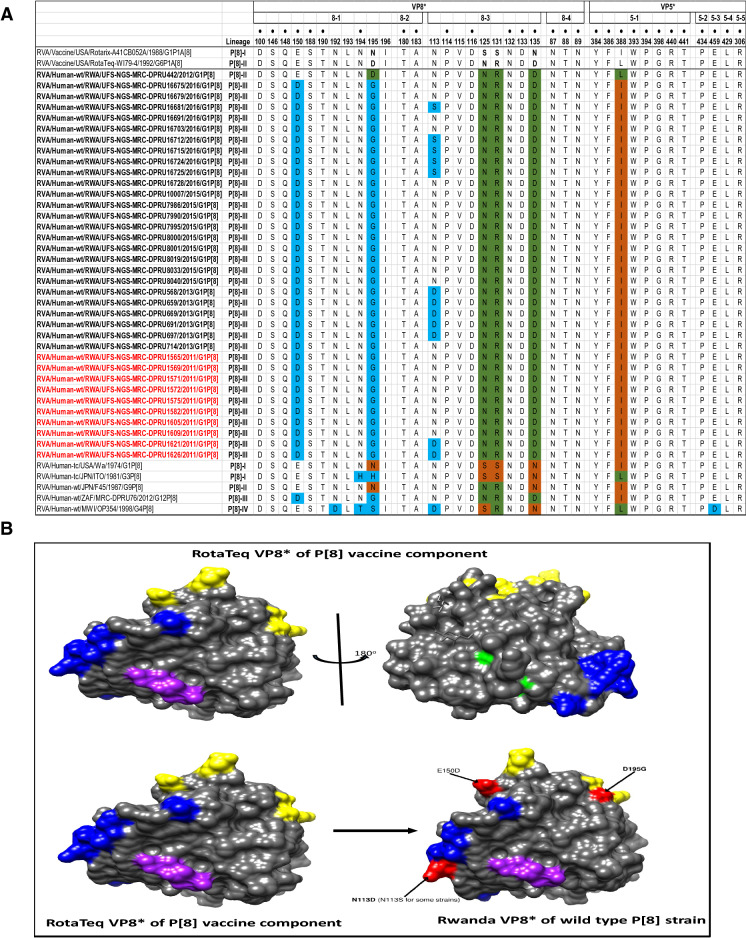Figure 5.
(A) The alignment of the P[8] component of Rotarix and RotaTeq vaccines and wild type P[8] strains circulating in Rwanda from 2011–2016 RVA seasons, based on the antigenic residues in VP4. VP4 is divided into two regions VP8* (antigenic epitope 8-1, 8-2, 8-3, and 8-4) and VP5* (antigenic epitope 5-1, 5-2, 5-3, 5-4, and 5-5). The black dot indicates changes in the residues associated with escape neutralization with monoclonal antibodies. Amino acids differences between Rotarix and RotaTeq are shown at positions 195 (antigenic epitope 8-1), 125, 131 and 135 (antigenic epitope 8-3) and are indicated in boldface. Study strains amino acid residues highlighted in green and brown are residues that are different from Rotarix and RotaTeq, respectively. Also, amino acids differences between study strains and Rotarix and RotaTeq are highlighted in sky blue. Post-vaccine and pre-vaccine G1P[8] study strains are bolded in black and red, respectively. (B) Location of surface-exposed amino acids differences between VP8* protein of RotaTeq P[8] vaccine component versus a wild-type P[8] strain from Rwanda (indicated in red). Antigenic epitopes in (B) are colored in yellow (8-1), green (8-2), blue (8-3) and purple (8-4).

